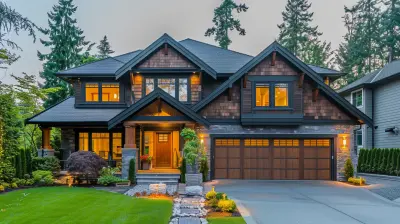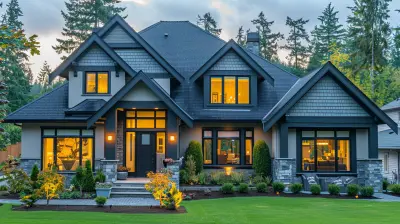Biophilic Architecture: Blending Nature with Sustainable Living
13 October 2025
Have you ever walked into a space that instantly made you feel calmer, more energized, or just simply at peace? Chances are, that space incorporated elements of biophilic architecture—a design approach that seamlessly blends nature with sustainable living.
In today’s fast-paced urban life, where concrete jungles dominate, reconnecting with nature through design is more than just a trend—it’s a necessity. Biophilic architecture is paving the way for a harmonious balance between modern living and the natural world, improving well-being while being kind to the planet. So, what exactly is this architectural marvel, and how can it shape the future of sustainable living? Let's dive in! 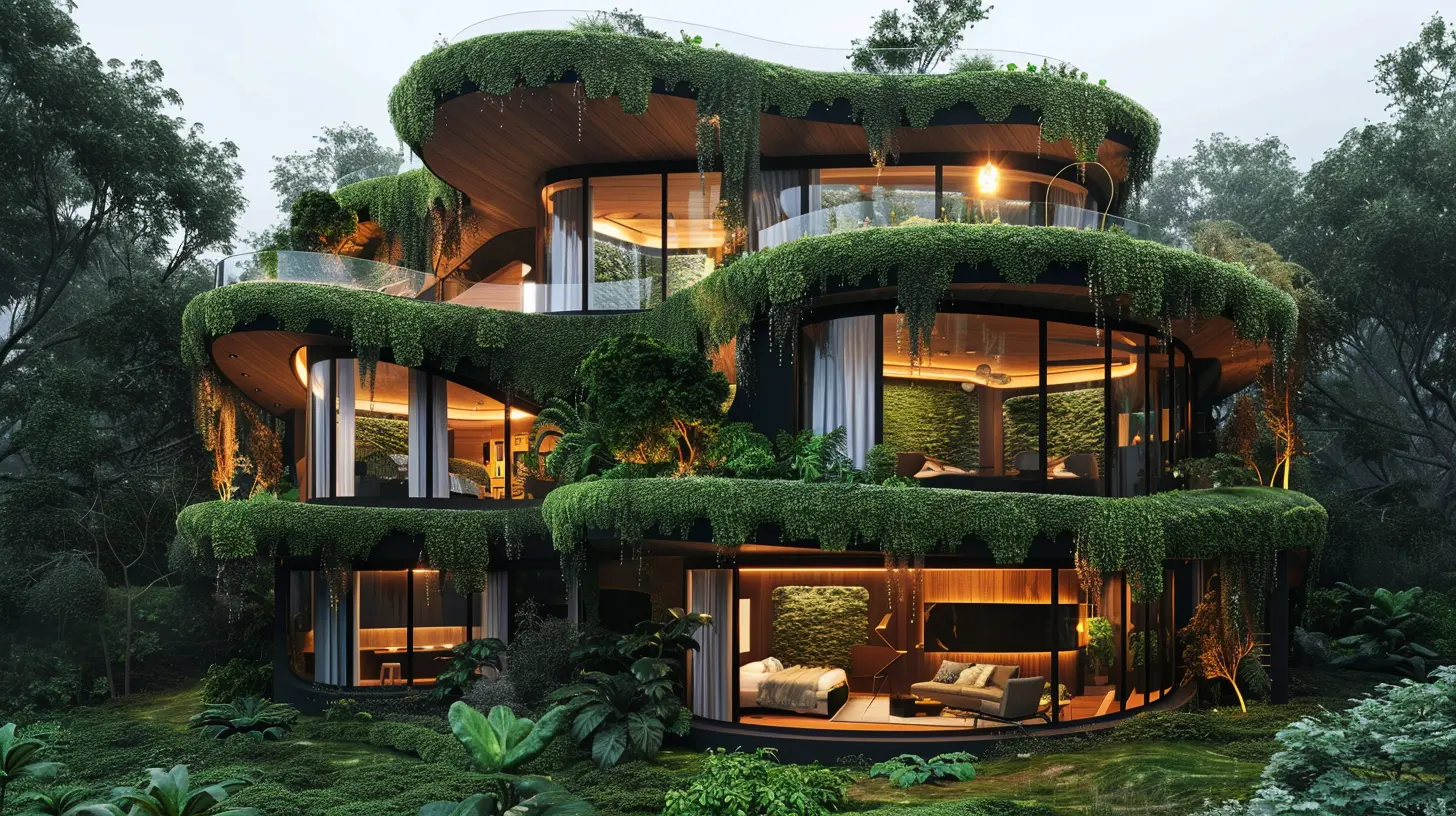
What is Biophilic Architecture?
At its core, biophilic architecture is about integrating natural elements into spaces where people live and work. It goes beyond simply adding a few houseplants—it's about designing buildings that foster a deep connection with nature.This design philosophy incorporates natural light, ventilation, water features, greenery, and organic materials to create environments that enhance not just aesthetics but human health and emotional well-being.
Think of a home where sunlight floods the interiors, where walls are adorned with lush vertical gardens, and indoor spaces have a natural airflow that keeps them cool. Sounds dreamy, right? That’s biophilic architecture in action! 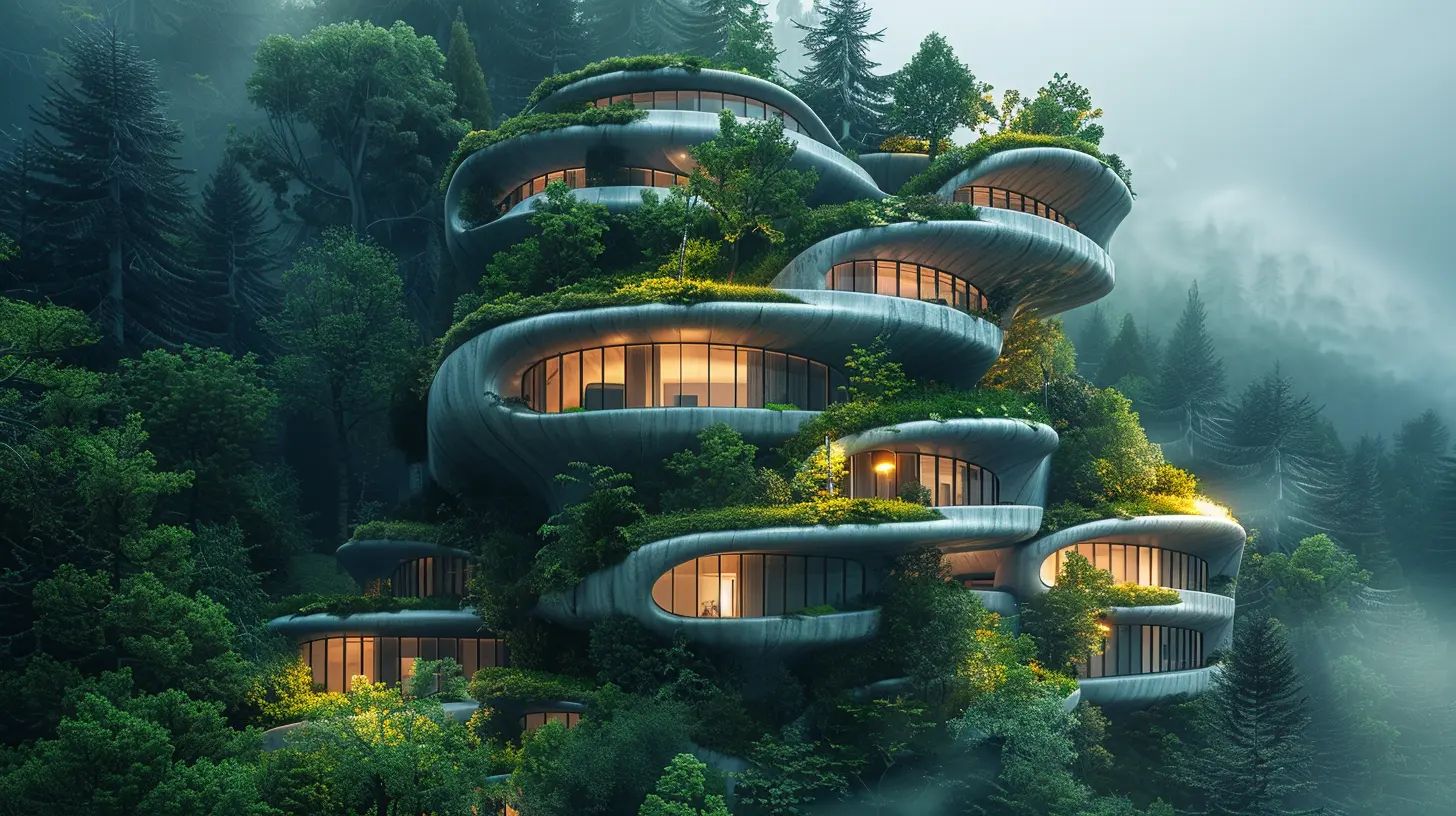
The Science Behind Biophilic Design
Many studies have shown that being close to nature has profound effects on mental and physical health. When people are surrounded by natural elements, they tend to experience:✅ Reduced Stress Levels – Natural settings decrease cortisol (the stress hormone), promoting relaxation.
✅ Improved Productivity – Offices incorporating greenery and natural light see increased focus and efficiency.
✅ Better Air Quality – Plants act as natural air filters, absorbing carbon dioxide and releasing oxygen.
✅ Enhanced Creativity & Mood – Nature has been proven to boost cognitive function and emotional well-being.
Recognizing these benefits, architects and designers are incorporating biophilic principles into modern buildings, ensuring that people feel connected with nature without leaving their homes or workplaces. 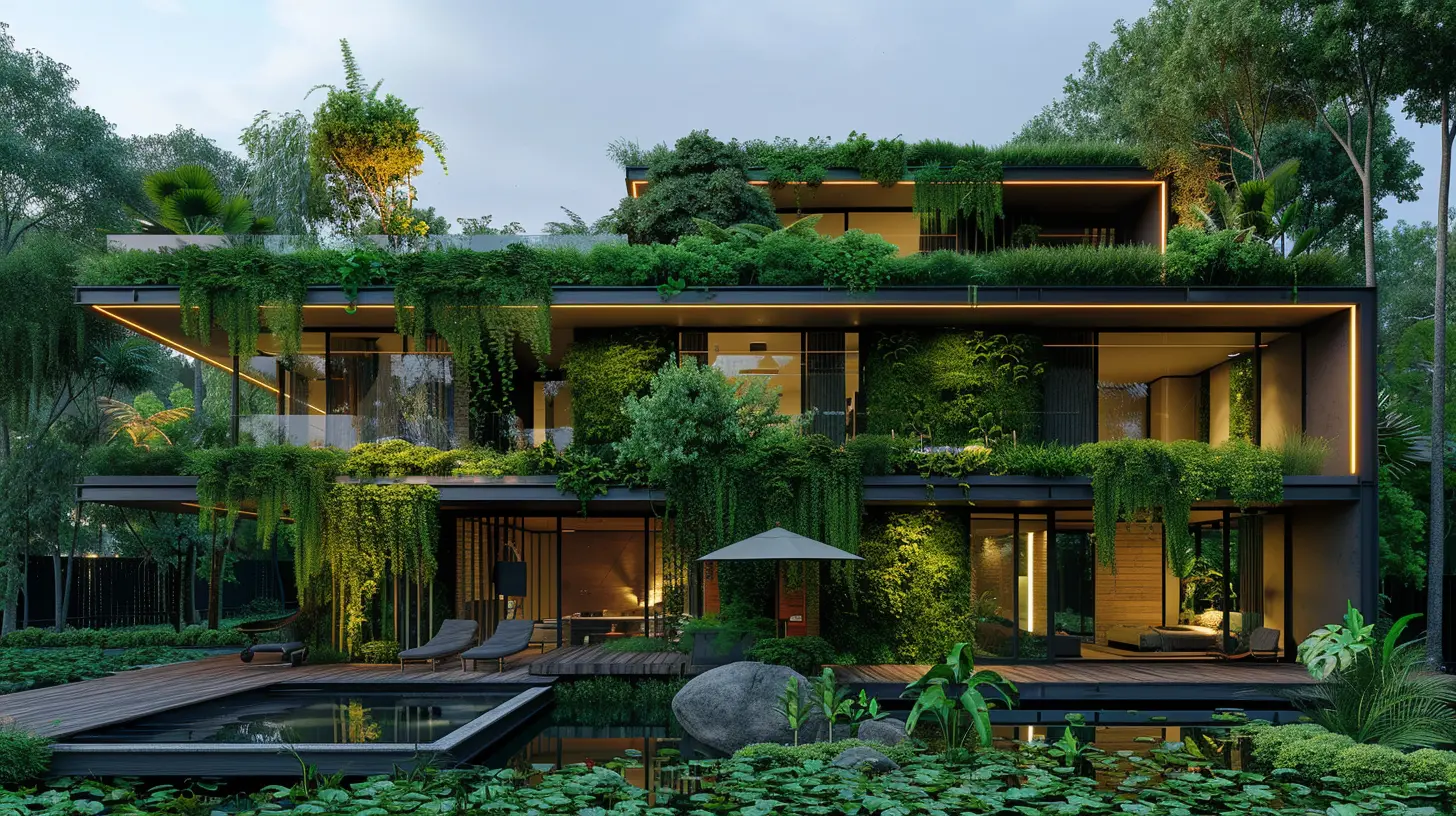
Key Elements of Biophilic Architecture
Biophilic architecture isn’t just about adding plants; it’s about creating an ecosystem within a built environment. Here are some of the ways architects bring nature into modern designs:1. Abundant Natural Light
Sunlight doesn’t just illuminate a space—it impacts mood, energy levels, and sleep cycles. Large windows, skylights, and open spaces allow natural light to flood interiors, reducing dependence on artificial lighting and saving energy.2. Green Spaces & Vertical Gardens
Ever imagined living in a home surrounded by indoor gardens? Green Walls (vertical gardens) and rooftop gardens introduce a touch of nature while improving air quality and insulation.3. Water Features that Soothe the Senses
From indoor waterfalls and fountains to small ponds, water features add a calming effect and enhance air humidity, making spaces feel refreshing.4. Natural Materials & Sustainable Resources
Using locally sourced wood, bamboo, stone, and clay brings warmth and authenticity to a design while reducing environmental impact. These materials age beautifully and add an organic feel to spaces.5. Smart Ventilation for Fresh Airflow
Biophilic homes embrace cross-ventilation—a design technique that ensures fresh air circulates naturally, keeping interiors cool without over-relying on air conditioning.6. Open and Flowing Spaces
Rigid walls that block movement and vision? Not in biophilic architecture! Open floor plans encourage seamless interaction between indoor and outdoor spaces, making nature feel like an extension of your home.7. Biomimicry in Architecture
Inspired by nature’s patterns, biomimicry applies organic shapes, fractals, and textures within structures, making spaces feel more inviting and ergonomic. Think honeycomb ceilings or wave-like wooden panels!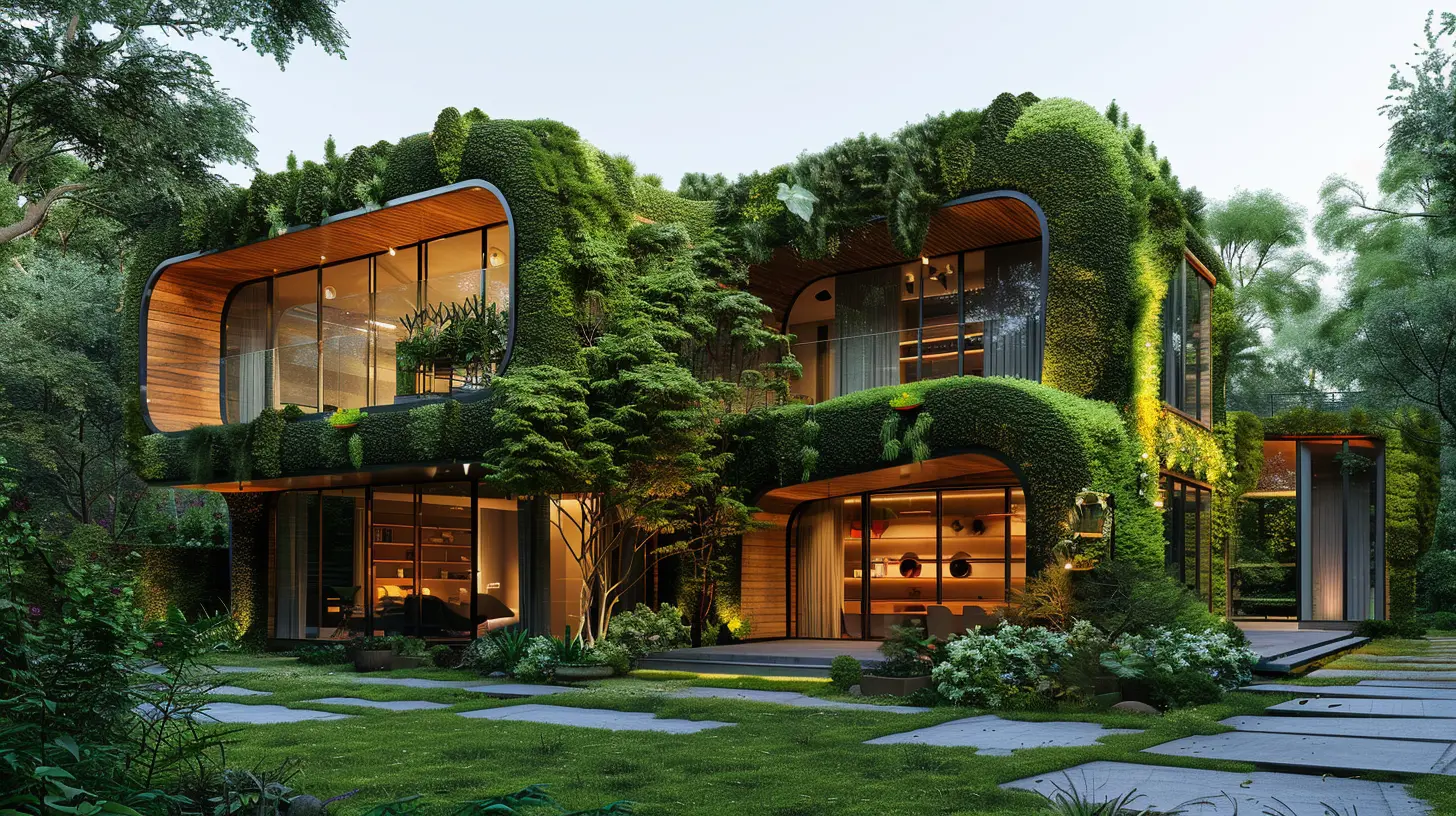
Why Biophilic Architecture is the Future of Sustainable Living
With climate change, overpopulation, and urbanization on the rise, sustainable design has never been more crucial. But why should we care about biophilic architecture, and how does it contribute to a greener planet?1. Energy Efficiency: Homes designed with natural ventilation, daylighting, and green roofs significantly reduce energy consumption.
2. Improved Air Quality: Indoor plants and natural materials help remove toxins from the air, creating a healthier living environment.
3. Reduced Carbon Footprint: Using locally sourced materials and eco-friendly design principles lowers emissions from construction and transportation.
4. Water Conservation: Many biophilic structures incorporate rainwater harvesting and water-recycling systems, reducing water waste.
5. Mental & Physical Well-being: A home that mimics nature promotes relaxation, reduces stress, and fosters a deeper connection with the natural world.
In essence, biophilic architecture isn’t just about aesthetics—it’s a lifestyle choice that benefits both people and the planet.
How Can You Implement Biophilic Design in Your Own Home?
You don’t need to be an architect to bring elements of biophilic design into your living space. Here are some easy ways to incorporate nature into your home:🌿 Add More Plants – Choose air-purifying plants like snake plants, pothos, or fiddle-leaf figs to enhance oxygen levels and aesthetics.
☀️ Maximize Natural Light – Use sheer curtains, install mirrors to reflect sunlight, and opt for glass doors to brighten up interiors.
💦 Introduce Water Elements – A small indoor fountain or tabletop water feature can add a sense of calm to any space.
🌳 Use Natural Materials – Swap synthetic decor for wood, stone, or bamboo furniture to create an organic, earthy vibe.
🌬 Improve Air Circulation – Open windows frequently to allow fresh air in, ensuring your home feels airy and energized.
Even small changes can transform your space into a biophilic haven, making your home feel more inviting and stress-free.
Real-Life Examples of Biophilic Architecture
Biophilic design is not just a concept—it has been successfully implemented in breathtaking projects worldwide.🏡 Bosco Verticale, Milan, Italy – These twin residential towers are adorned with over 900 trees, 5,000 shrubs, and 11,000 plants, acting as a vertical forest in the middle of a bustling city.
🏢 The Amazon Spheres, Seattle, USA – A workspace designed to bring employees closer to nature, featuring thousands of plant species within dome-shaped glass structures.
🏠 One Central Park, Sydney, Australia – A residential and commercial complex with hanging gardens, solar panels, and water recycling systems for a sustainable, green lifestyle.
These projects showcase the power of biophilic architecture and how it can transform urban environments into eco-friendly, serene living spaces.
Final Thoughts
Biophilic architecture is not just about making buildings prettier with plants—it’s about creating spaces that nourish the body, mind, and soul while preserving the environment.As urbanization continues to expand, embracing biophilic principles can help us maintain a vital connection with nature, improve well-being, and pave the way for a sustainable future.
So, whether you're designing a new home or just adding a few indoor plants, remember—bringing nature into your space is never a bad idea.
all images in this post were generated using AI tools
Category:
Sustainable HousingAuthor:

Cynthia Wilkins
Discussion
rate this article
1 comments
Rory Anderson
This article on biophilic architecture is fascinating! I'm curious about how integrating natural elements can enhance our well-being and connection to the environment. What specific design features have proven most effective in creating sustainable living spaces inspired by nature? Excited to learn more!
October 19, 2025 at 2:41 AM

Cynthia Wilkins
Thank you for your interest! Key design features include natural light, indoor plants, water elements, and natural materials. These elements improve our well-being by enhancing mood, reducing stress, and fostering a deeper connection to nature. Excited to share more insights with you!
